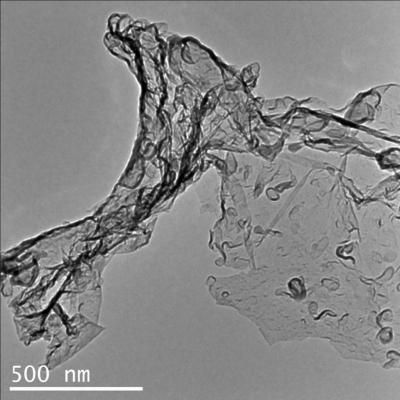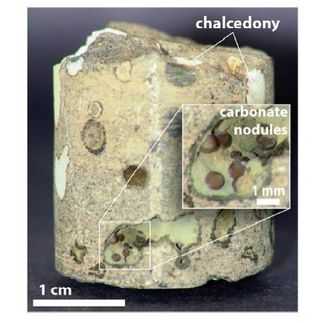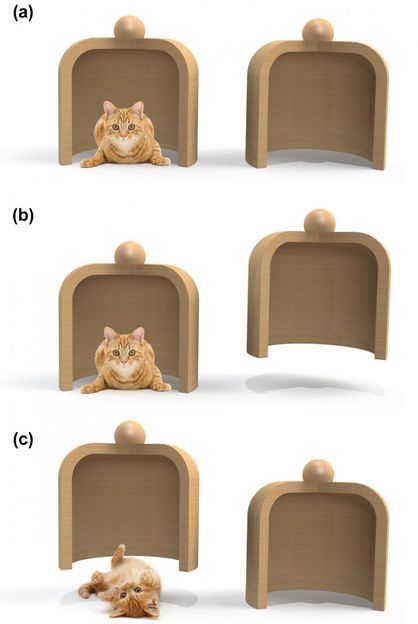From lemons to lemonade: Using carbon dioxide to make carbon nitride
Exothermic reaction also yields lithium cyanamide, a precursor to fertilizers
A materials scientist at Michigan Technological University has discovered a chemical reaction that not only eats up the greenhouse gas carbon dioxide, it also creates something useful. And, by the way, it releases energy.

This is a transmission electron microscopy image of carbon nitride created by the reaction of carbon dioxide and Li3N.
Yun Hang Hu
Making carbon-based products from CO2 is nothing new, but carbon dioxide molecules are so stable that those reactions usually take up a lot of energy. If that energy were to come from fossil fuels, over time the chemical reactions would ultimately result in more carbon dioxide entering the atmosphere—defeating the purpose of a process that could otherwise help mitigate climate change.
Professor Yun Hang Hu's research team developed a heat-releasing reaction between carbon dioxide and Li3N that forms two chemicals: amorphous carbon nitride (C3N4), a semiconductor; and lithium cyanamide (Li2CN2), a precursor to fertilizers.
"The reaction converts CO2 to a solid material," said Hu. "That would be good even if it weren't useful, but it is."
And how much energy does it release? Plenty. Hu's team added carbon dioxide to less than a gram of Li3N at 330 degrees Celsius, and the surrounding temperature jumped almost immediately to about 1,000 degrees Celsius, or 1,832 degrees Fahrenheit, about the temperature of lava exiting a volcano.
Most read news
Other news from the department science

Get the chemical industry in your inbox
By submitting this form you agree that LUMITOS AG will send you the newsletter(s) selected above by email. Your data will not be passed on to third parties. Your data will be stored and processed in accordance with our data protection regulations. LUMITOS may contact you by email for the purpose of advertising or market and opinion surveys. You can revoke your consent at any time without giving reasons to LUMITOS AG, Ernst-Augustin-Str. 2, 12489 Berlin, Germany or by e-mail at revoke@lumitos.com with effect for the future. In addition, each email contains a link to unsubscribe from the corresponding newsletter.



























































